An electronic document management system, often known as an EDMS, is a software program that is used to collect, organize and archive various types of electronic documents.
While the general type of document management system assists users in the organization in storing paper or digital documents, this type of system is more specific and delivers another layer of features.
EDMS is short for electronic document management system, and it refers more particularly to a software system that manages digital documents as opposed to paper documents.
However, in some cases, these systems may also manage digital scanned versions of original paper documents.
An electronic document management system offers a means of storing a significant quantity of digital documents in a centralized location.
Many of these electronic management systems also include components that allow for the recovery of documents in an effective manner.
Contact Fotopia Technologies to know more about the EDMS services and upgrade to SharePoint in order to have an easier and more efficient document management solution.
Benefits of EDMS:
More secure.
Easier access to your documents.
Quicker connection with your team on the cloud.
Search and retrieve any information in seconds.
The different types of an electronic document management system:
Content Management
Often referred to as web content management, this sort of document management system focuses on creating, updating, organizing, and providing content to users.
Indexing, searching, and publishing are three functionalities that are generally included in content management systems.
Workflow Management
When it comes to document management technologies that are focused on workflow, automation is the name of the game.
Workers are freed up to focus on higher-level activities thanks to the automation of repetitive, content-based tasks that these systems perform for them.
Record Management
The terms “governance,” “risk,” and “compliance” are typically associated with “record management,”
Which refers to the process of controlling the creation, maintenance, and destruction of records.
The healthcare industry, which is highly regulated, is a notable example of one that uses these kinds of systems.
Further types of electronic document management system:
Document Imaging
Document imaging systems are necessary for businesses in which the use of paper is still prevalent.
As these software applications can scan, collect, organize, and manage digital images that have been converted from paper documents.
Enterprise Content Management
Enterprise content management (ECM) systems go one step further than traditional content management by putting an emphasis on data in addition to content.
These systems provide content in its proper context by incorporating components of other types of document management systems.
Such as workflows, processes, and business rules, amongst others.
Why build an ECM?
Actualizing an electronic record administration framework gives a number of benefits:
It basically offers you expanded security, productivity, straightforwardness, and efficiency.
It makes a difference in your company as it remains organized.
It also decreases the chances of information going lost, making a difference if your trade runs easily and remains compliant.
To have all your files saved in a single unmarried location, collaborators have got admission to up-to-date, applicable facts regarding invoices, quotes, patron data, charge lists, etc.
SharePoint transforms all of your files into actionable files, all files including (administration, quotes, customers, suppliers, etc.) can consequently be controlled electronically.
Electronic document management system features:
- Collaborative tools for easy sharing and live editing features.
- Creation and digitalization of documents.
- Scalable and centralized document storage.
- Document control systems.
- Advanced security protocols.
- Automatic and manual backup and archiving processes.
- Access controls.
- Collaborative tools for easy sharing and live editing features.
- Tools for tracking document history and system activity.
- Searches across multiple resources and platforms.
- Advanced security protocols.
- Internal and external file sharing capabilities
- Organization of files with tagging systems, metadata searching, and folders.
- Features for managing document and record lifecycles.
Why chooseFotopia Technologies?
We are introducing the ultimate enterprise document management tools with Fotopia Technologies and Microsoft 365.
These tools enable you to easily collect, index, export and archive documents from multiple sources like physical, digital files, local drives, emails, etc.
Building your document management system on Microsoft 365 with Fotopia also allows scalability as you can start with one user and grow it up to thousands on your electronic document management system.





